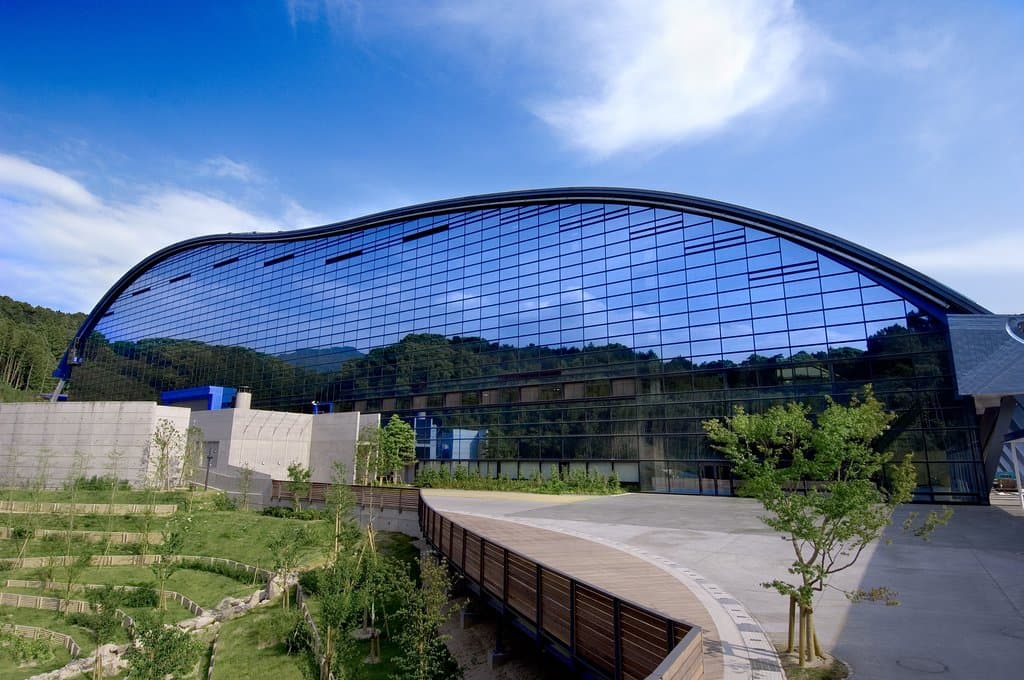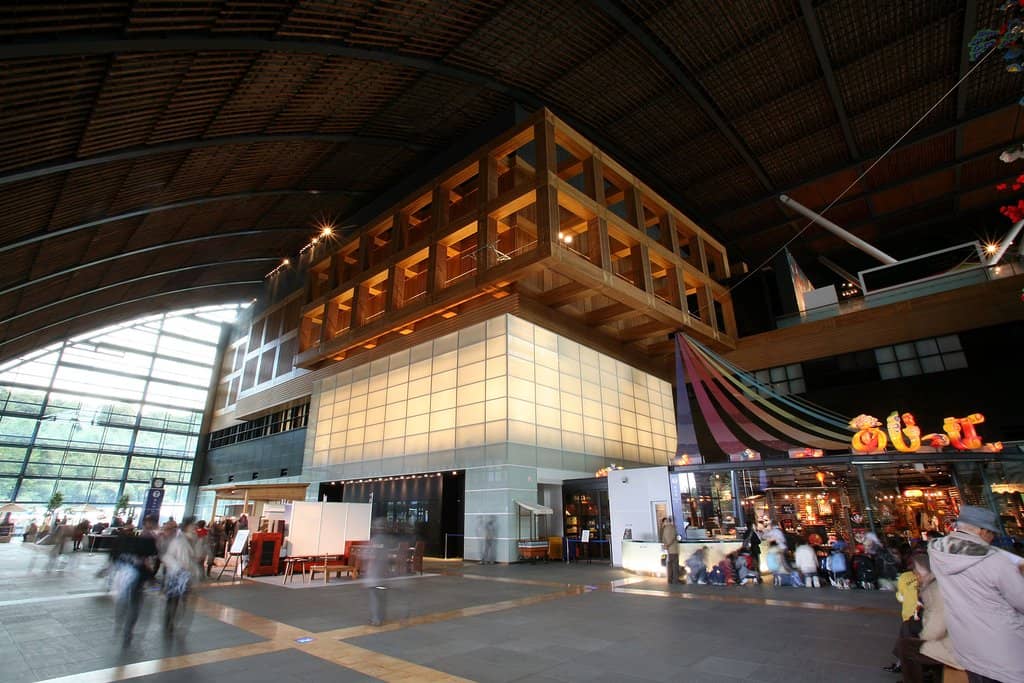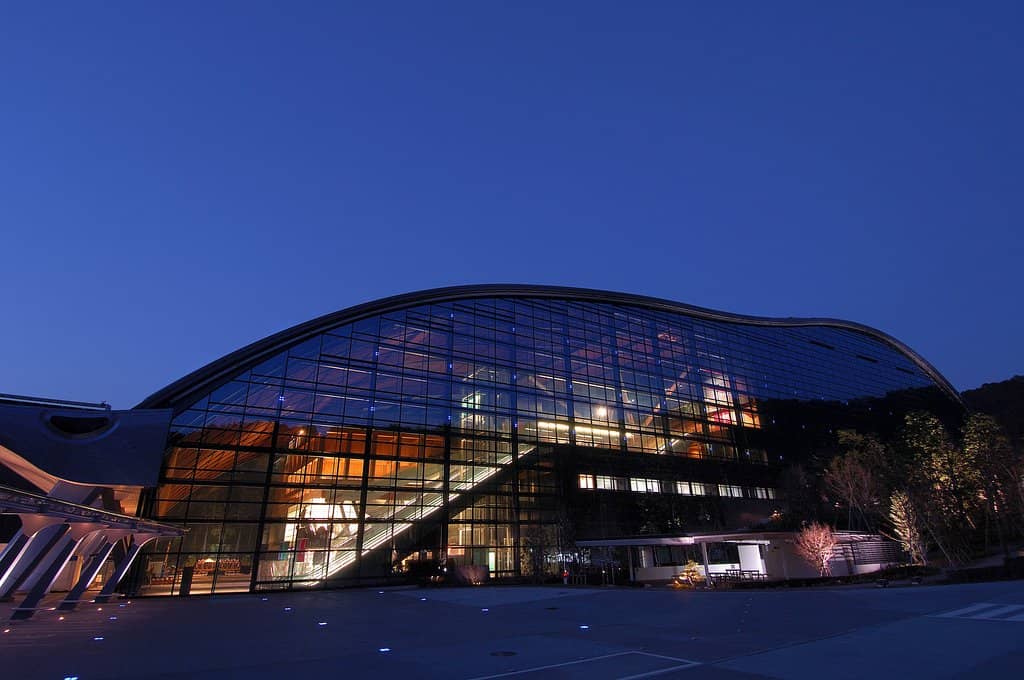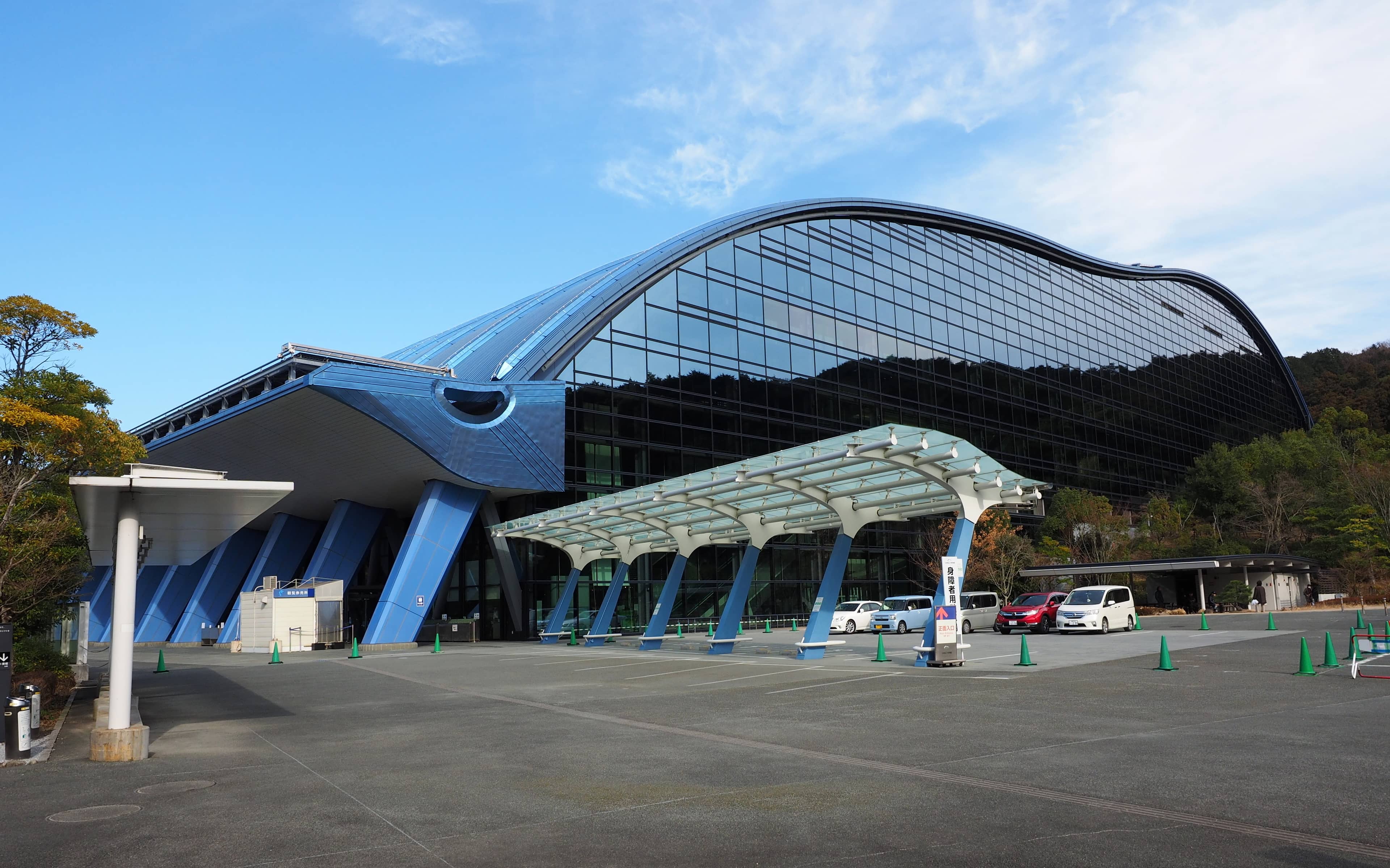
Kyushu National Museum
A modern architectural marvel housing a rich collection detailing Japan's cultural exchange with Asia.

Highlights
Must-see attractions

Social
From TikTok & Reddit
Best Time
Fewer crowds, more relaxed viewing

Kyushu National Museum
Best Time
Fewer crowds, more relaxed viewing

Highlights
Must-see attractions
A modern architectural marvel housing a rich collection detailing Japan's cultural exchange with Asia.
"Underrated museum with a beautifully presented permanent collection and excellent English explanations."

Allocate Enough Time ⏳
Don't rush! 1.5 hours is recommended to see the permanent collection properly .
Check for Student Discounts 🎓
Bring clear identification if you're a student to inquire about potential discounts .

Highlights
Discover the most iconic attractions and experiences

Permanent Collection
Journey through prehistoric times to the 19th century, focusing on Japan's Asian cultural exchange.

Modern Architecture
Admire the dramatically modern, mirrored architecture and impressive museum grounds.

Special Exhibitions
Explore rotating exhibits that offer deeper dives into specific historical periods or themes.
Plans like a pro.
Thinks like you
Planning Your Visit
Timing Your Visit for a Smoother Experience
Navigating Admissions and Discounts
Best Times
Insider Tips
from TikTok, Instagram & Reddit
Allocate Enough Time ⏳
Don't rush! 1.5 hours is recommended to see the permanent collection properly.
Check for Student Discounts 🎓
Bring clear identification if you're a student to inquire about potential discounts.
Kyushu Historical Museum
Best history museums in Japan
Enjoy the Architecture 🤩
The modern, mirrored building and grounds are as impressive as the exhibits.
Free Guided Tours Available 🗣️
Ask staff about free guided tours for a more in-depth experience.
Tips
from all over the internet
Allocate Enough Time ⏳
Don't rush! 1.5 hours is recommended to see the permanent collection properly.
Check for Student Discounts 🎓
Bring clear identification if you're a student to inquire about potential discounts.
Enjoy the Architecture 🤩
The modern, mirrored building and grounds are as impressive as the exhibits.
Free Guided Tours Available 🗣️
Ask staff about free guided tours for a more in-depth experience.
Don't Forget the Stamp! ✍️
Collect a unique stamp as a souvenir of your visit.
What Travellers Say
Reviews Summary
Visitors praise the Kyushu National Museum's stunning modern architecture and the well-presented permanent collection, highlighting its focus on Japan's Asian cultural exchange. While some find the museum smaller than anticipated for its price, the engaging exhibits and helpful staff contribute to a positive experience for many.
"One of the four national museums, but compared to the one in Tokyo, the one here in Dazaifu falls short in terms of exhibits and size. However, the architecture and the museum grounds were impressive and it's definitely worth a visit should you be in Dazaifu."
Jun Mizuno
"I asked to the staff for the student discount and showed my residency card. The miss still didn't believe me, and I had to pay the full fee, which seems expensive.
The museum is smaller than I expected; for its price and historical relevance, I thought it would have more floors.
The only thing that impressed me was the entrance.
I recommend going to the Fukuoka City Museum, it's better in price and size. I only paid ¥150"
Iára Torres Cabrera
"Underrated museum. In a country where they can be a bit hit and miss, the permanent collection was beautifully presented in a large atmospheric black hall, with excellent English language explanations, taking you from prehistoric up until 19th C history, focusing especially on the cultural and trade exchange between Japan and Asia. There are some absolute gems of statues, vases, scrolls and paintings among the collection.
At the front desk, I was advised around 40 mins was enough to see the collection, but 1.5 hours was just enough to get to the end.
If you chose one museum around Fukuoka, I'd make it this one for sure (the Fukuoka City museum feels dated and mundane in comparison)."
Gergely Stewart
What People Like
What People Dislike
Frequently Asked Questions
🚇 🗺️ Getting There
The Kyushu National Museum is located in Dazaifu. You can take a train from Fukuoka (Hakata Station) to Futsukaichi Station, then transfer to the Nishitetsu Tenjin Omuta Line and alight at Dazaifu Station. From Dazaifu Station, it's a short walk to the museum. Alternatively, buses are available from Fukuoka city.
Yes, there is parking available at the Kyushu National Museum. However, it can get busy, especially on weekends and holidays. It's often recommended to use public transportation if possible.
From Fukuoka Airport, take the subway to Hakata Station, then follow the train directions to Dazaifu. This is generally the most efficient route.
While there isn't a dedicated shuttle service directly from Fukuoka city, local buses operate within Dazaifu and can take you close to the museum from Dazaifu Station.
Yes, it's feasible to visit the Kyushu National Museum as a day trip from Fukuoka. For visitors coming from further afield like Kumamoto or Kyoto, it might require more extensive travel planning.
🎫 🎫 Tickets & Entry
Admission fees can vary for special exhibitions. The permanent collection often has a modest fee, but some visitors feel it's a bit high for the size of the museum. Check the official website for the most current pricing.
Student discounts may be available, but it's advisable to have clear identification. Some visitors have reported issues with proving student status. Senior discounts might also be offered; inquire at the ticket counter.
The museum typically opens around 9:30 AM and closes at 5:00 PM. It's usually closed on Mondays and during certain holiday periods. Always check the official website for exact hours and closures.
For the permanent collection, advance booking is usually not required. However, for popular special exhibitions, it might be advisable to book tickets in advance, especially during peak seasons.
Yes, special exhibitions often have a separate admission fee, which may be higher than the permanent collection. Some visitors find these extra exhibitions to be worth the cost.
🎫 🏛️ Onsite Experience
While some staff might suggest 40 minutes, many visitors recommend at least 1.5 hours to thoroughly explore the permanent collection. If you plan to see special exhibitions, allocate more time.
Yes, the museum is designed with accessibility in mind. There are ramps and elevators, including a 'rainbow stairway' or 'rainbow bridge' for easier access if you have difficulty with stairs.
Yes, free guided tours are often available. It's a great way to gain deeper insights into the exhibits, and staff can provide helpful information.
Photography policies can vary. Generally, photography without flash is permitted in the permanent collection, but it's best to check signage or ask staff for specific rules, especially in special exhibition areas.
The permanent collection features excellent English language explanations, making it accessible for international visitors. Special exhibitions may also have multilingual support.
🍽️ 🍽️ Food & Dining
The museum typically has a cafe or restaurant where you can enjoy light meals and refreshments. It's a convenient spot to take a break during your visit.
Outside food and drinks are generally not allowed inside the exhibition halls. However, there might be designated areas where you can consume your own refreshments.
Dazaifu town offers a variety of dining options, from traditional Japanese cuisine to local specialties like Umegae Mochi. You can find many restaurants and cafes within walking distance of the museum.
Prices at museum cafes are generally comparable to other tourist attractions. For more budget-friendly options, exploring the local eateries in Dazaifu town is recommended.
While specific options can vary, many Japanese restaurants in Dazaifu can accommodate dietary requests. It's always best to inquire directly with the establishment.
📸 📸 Photography
Photography without flash is usually permitted in the permanent collection areas. However, always look for signs or ask staff for confirmation, as rules can differ for special exhibitions.
The modern, mirrored architecture of the museum itself is a popular subject for photography. The grounds and the entrance area also offer great photo opportunities.
Drone usage is typically restricted in and around cultural sites and public spaces. It's best to assume drone photography is not permitted to avoid any issues.
Commercial photography usually requires special permission. If you intend to conduct a professional photoshoot, contact the museum administration in advance.
A versatile lens that can capture both wide architectural shots and details of exhibits would be ideal. Given potential low-light conditions, a camera with good low-light performance is beneficial.
For Different Travelers
Tailored advice for your travel style
👨👩👧 Families with Kids
To make the visit more enjoyable for younger ones, consider focusing on specific visually appealing exhibits rather than trying to cover everything. Look for interactive elements if available, or prepare some simple questions about the artifacts beforehand. The museum cafe offers a good spot for a family break, and the town of Dazaifu itself has local snacks like Umegae Mochi that kids might enjoy.
🏛️ History Buffs
Pay close attention to the excellent English explanations which provide detailed context for each piece. Consider dedicating ample time, at least 1.5 hours, to fully absorb the information. If you're particularly interested in specific periods like the Early Japan to Edo Period, this museum provides a rich and rewarding experience that complements other historical sites in the region.
Deep Dives
In-depth insights and expert knowledge
Architectural Marvel
Beyond the exterior, the interior spaces are equally impressive. The permanent collection is housed in a large, atmospheric black hall, which enhances the viewing experience of the artifacts. This thoughtful design choice helps to focus attention on the historical treasures within, creating a contemplative environment for learning and appreciation. The overall architectural experience is a significant part of the museum's appeal, making it a destination for both art and design enthusiasts.
Exploring Japan's Rich History
What sets this museum apart is its detailed exploration of Japan's interactions with its neighbors. This perspective is crucial for understanding the influences that shaped Japanese culture, art, and society. The excellent English language explanations accompanying the exhibits ensure that international visitors can fully engage with the historical narratives. For those interested in early Japan through the Edo Period, this museum provides a valuable and well-presented educational experience.






Social
from TikTok, Instagram & Reddit